Are you looking to spruce up your concrete floors? Vinyl planks are an affordable yet stylish option. The wood pattern and staggered nature of the planks will uplift and add a touch of cozy to any room.
We created this guide to show you the exact steps to install vinyl plank flooring on concrete. You will also find some handy tips to help you along the way. So, gather your tools, and let’s get working!
Table of Contents
Tools and Supplies You Will Need
- Vinyl planks
- Tape measure
- Utility knife
- Pencil
- ¼ inch spacers
- Putty knife and pry bar
- Mallet
- Tapping block
- Carpenter’s level
Step-by-Step Guide To Install Vinyl Plank Flooring on Concrete
Follow these steps to install vinyl flooring:
Step 1: Pry out the baseboards
When installing vinyl planks, there needs to be a small space between the walls and the planks to give enough space for the vinyl’s expansion and contraction. You will also need to slide some planks underneath the corners of the room. For this to happen, you will have to remove any baseboards in the room.
Cut any adhering paint between the wall and baseboard. Then, insert a putty knife to lift and cut out the boards. Use a pry bar to loosen nails that might be holding the boards to the wall. Be sure to handle your baseboards carefully if you intend to reinstall and use them again.
Step 2: Repair cracks on the floor
Vinyl flooring is flexible, but the planks will come apart if you do not prepare the concrete subfloor. The first thing you need to do is fix any cracks that can compromise the stability of the subfloor.
Hairline cracks are easy to fix. Squeeze a bottle of concrete patching compound or filler over a crack to fill them in. Use a trowel to smooth the compound. Repeat this process to fix all cracks on the floor.
Step 3: Measure the floor’s levelness
Your vinyl flooring will look its best when it is installed on a leveled floor. A simple carpenter’s level will tell you the spots that need to be evened out.
Generally, any spot that is lower or higher by 3/16 inches of the floor’s overall levelness over a distance of 10 feet needs to be evened out to bring it to par.
Step 4: Sand down high spots and fill in low spots
If the carpenter’s level shows a spot is slightly higher, you will need to bring this part down so that it is at the same level as the rest of the floor.
The best tool to use for this job is a belt sander. Run the sander over the target area and use a level to check that the floor is even. Be modest with the sander to avoid excessively grinding down the floor.
If possible, open the windows as you use the sander to let the dust out and clean fresh air in. Also, remember to vacuum the floor to remove the dust before installing the planks.
Pro Tip: Use a coarse sanding belt, preferably one that is 40 or 60 grit.
Step 5: Fill in low spots
You also need to correct depressed spots on the floor. Using a self-leveling compound is the easiest way to raise those low spots. First, apply leveling primer to the concrete and wait 4-5 hours for it to dry before applying the leveling compound.
Follow the manufacturer’s instructions for preparing the leveling compound. Once you pour the mixture onto the floor, it will move to fill in the lower spots. Allow the leveling compound to dry in place before installing vinyl planks.
Step 6: Calculate the number of full planks you will need to fill out the room
Now that you have prepared the concrete subfloor, your next task is to measure the room to determine the number of planks you will need to install in there.
Having an accurate layout of the room ensures that planks on the first and last row are the same. Likely, your floor space is not completely even. If you don’t accurately map out the room, you might have a thin last row of planks, which is not the look you are after. You want even-sized planks on either side of the room.
Start by measuring the width of the room and then the width of the vinyl planks. Divide the width of the planks with the width of the room to find out the number of planks you will need to fill the room. You will also be able to determine how wide the last row of planks should be.
Ideally, the size of the final row of planks should not be smaller than a third of the size of the preceding rows. If you find that the planks on the final row might be smaller, you will need to trim down the size of the first row of planks to be equal to that of those of the last row.
To avoid a situation where you have to undo the entire floor, make sure that the size of the planks is equal and even before installing the floor.
Step 7: Mark chalk lines
When installing vinyl flooring, you want to ensure that the planks are laid down in a straight line. To help with this, you will need to mark the floor with straight chalk lines to serve as guides.
Use a tape measure to determine the center of each of the room’s walls. Mark a vertical line of each central point and then connect these points to the middle. In the end, you would have divided the room into four quarters.
Next, account for the expansion gaps. You will leave a gap of ¼ inch from the wall when you lay down the first row of planks. This small gap allows space for the planks to safely expand and contract due to temperature changes. There is a risk of the floor buckling if there is no expansion space between the walls.
Use a tape measure to mark about ¼ inch from all the walls. Drawing a chalk line will greatly help to keep this ¼ gap visible. Keep an eye on this line when you start installing the planks.
Step 8: Prepare the first row of planks
The way you lay down the first row will determine how the rest of the rows and the entire floor will turn out.
A rule of thumb is to ensure that the last plank of the first row is at least 6 inches long. If not, you will need to cut the first plank to make space for the 6-inch plank at the furthest end.
Vinyl planks come with a tongue on one side and a groove on the opposite side. The tongue and groove design allows the planks to interlock in place.
To get started with installation, you will first cut the tongue of the first-row planks. Lay the plank with the face-up, then use a sharp utility knife to trim off the tongue if it doesn’t fall off after scoring with the knife, bend the tongue to break it off.
This is the only time you will need to cut the edges of the plank. The only other time will be if you need to match the size of the last row planks with that of the first row planks.
Step 9: Lay the first row of planks
After trimming the edge of the first row planks, it is now time for installation. Using the chalk line you had marked earlier with a ¼ inch gap from the wall, install the first full-size planks. The edge with the tongue cut off should face the wall while the grooved side faces the room.
To install the second plank of the first row, hold the plank at a slight angle along the width of the first plank. Hold the plank in place and lower it until the groove and tongue interconnect. You can use a mallet to tap slightly on the joint to ensure that the planks completely lock into place.
Step 10: Install the second row of planks in a staggered pattern
Avoid the H-joint problem, which comes about when planks are evenly laid instead of staggering them. Vinyl planks come in the same size, so it is easy to align them so that all the joints lay in a straight line.
Staggering the planks strengthens the joints and prevents the planks from shifting. A staggered pattern is also more aesthetically appealing.
After installing the first row planks, you can begin staggering the planks in the second row. To get started, use a tape measure to measure the length of a new plank.
Determine the two-thirds point of the plank and mark this with a straight vertical line with a T-square and pencil. Generally, vinyl planks are about 36 inches long; therefore, two-thirds of this is 24 inches long. Then, slowly but gently break the plank along the marked vertical line.
This two-thirds plank will be the first one on the second row. Hold this plank up at an angle and secure its tongue into the groove of the first-row plank. Complete this second row by installing at least one more full-width plank.
Continue to measure and cut two-thirds and lay them on the floor until you install the vinyl plank flooring in the entire room. Once you are done, reinstall the baseboards.
Extended Tips
- Remove the planks from their boxes and put them in the room you are going to be working on. Leave the planks there for at least 48 hours to allow them to acclimatize.
- Mix planks from different boxes to ensure that the color is uniform throughout the floor.
- As part of the preparation, trim off the door jambs. This will make it easy to install planks underneath the doors.
- Concrete is prone to trapping moisture, which can cause mold and mildew to grow on the vinyl planks. To avoid this, plan to insulate the concrete floors. Find out from the vinyl planks manufacturer the best type of insulation for your particular planks.
Get a New Floor With Easy Vinyl Plank Installation
You don’t need to be a pro or require expensive tools to install vinyl plank flooring on concrete. Once you prepare the concrete subflooring, just align, click the planks into place, and your vinyl floor will come together in a short time.
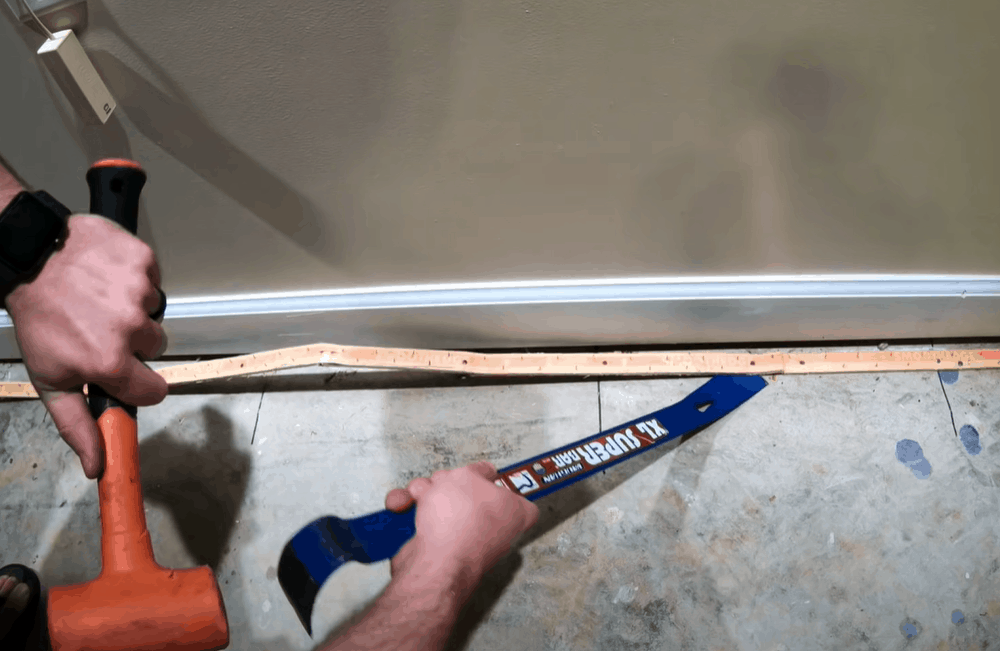
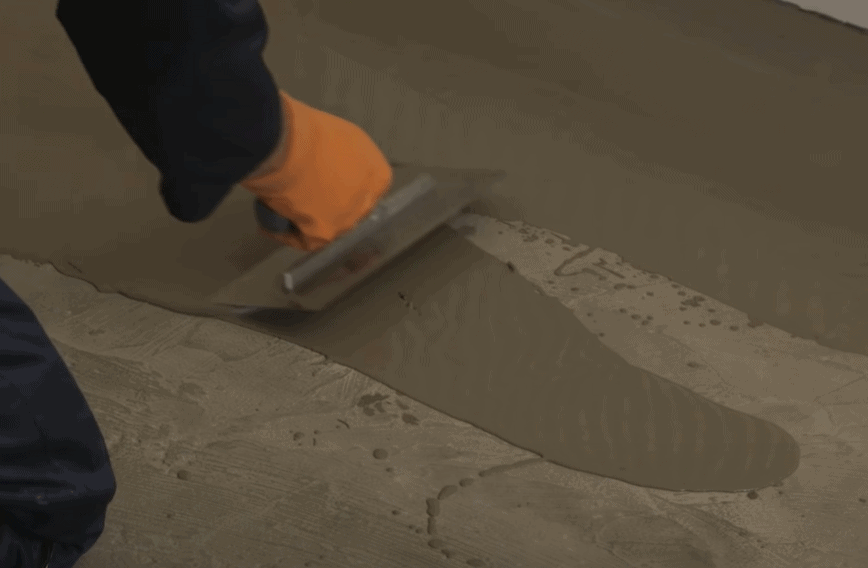
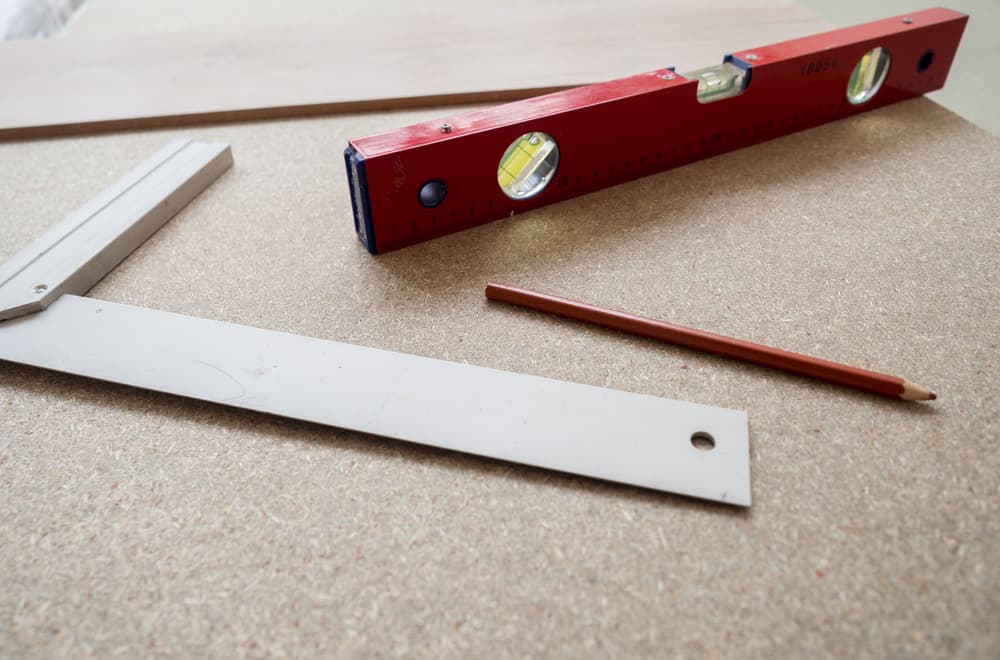
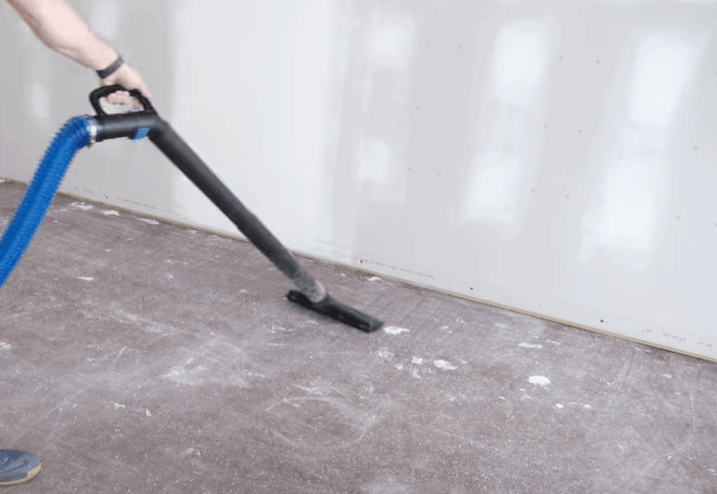
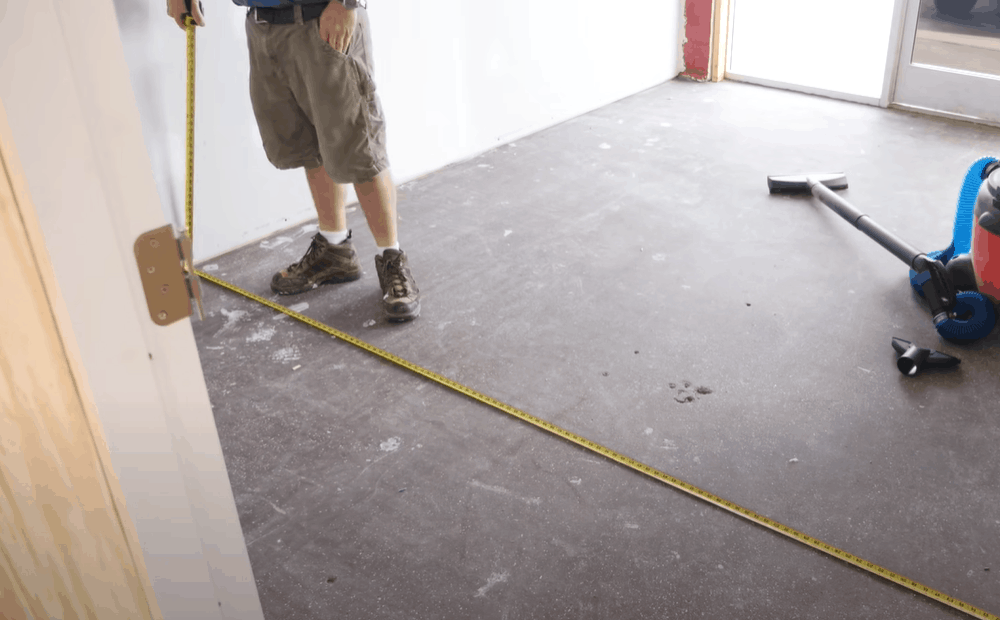
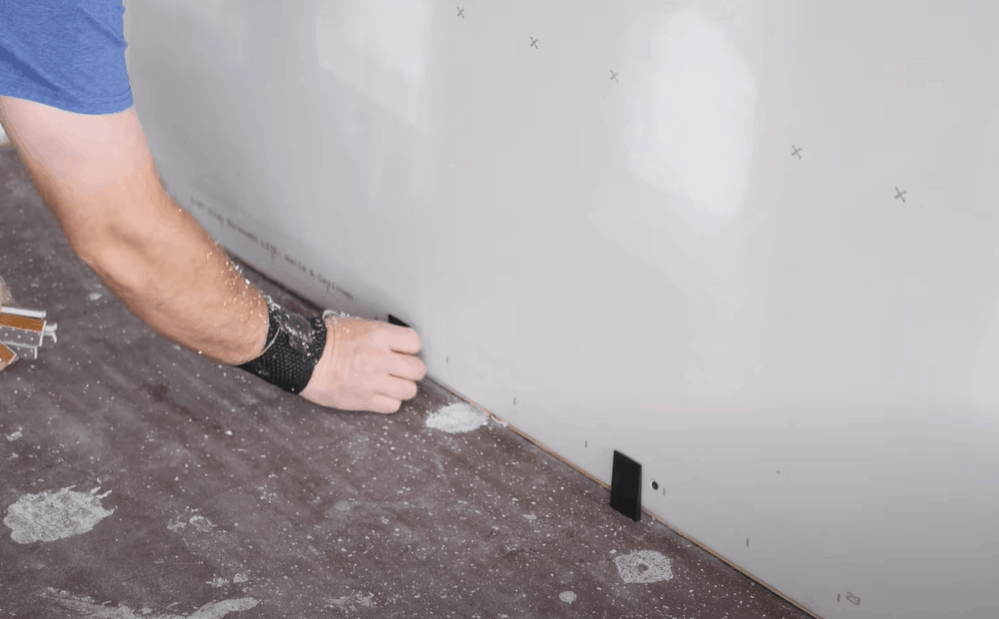
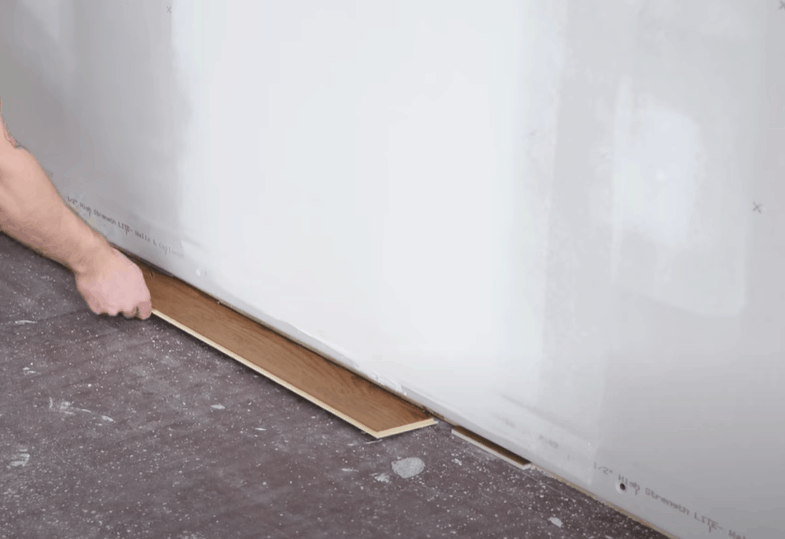
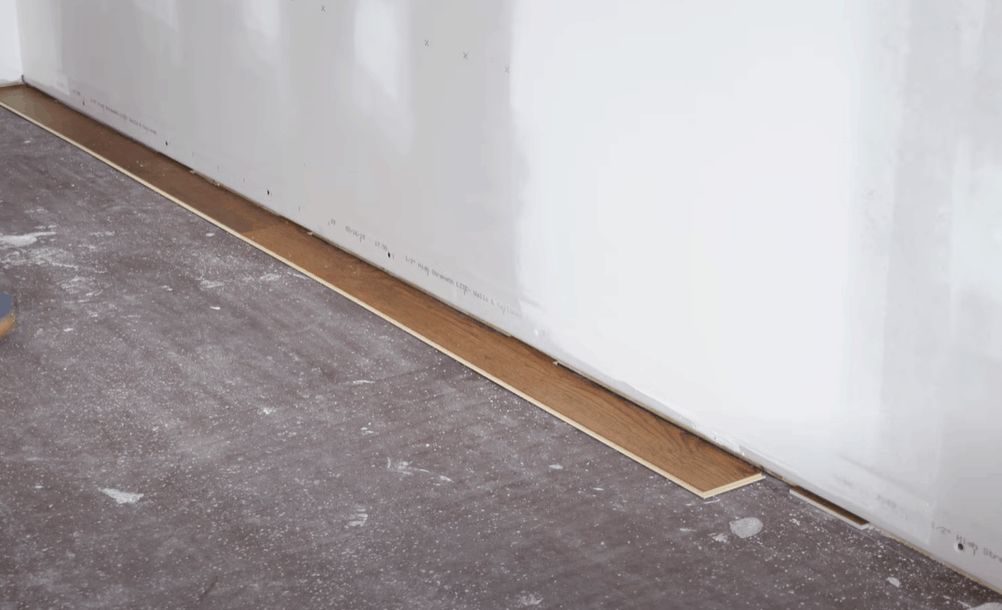
Very Helpful. Thanks
How do I handle un-level spots in the concrete? and what should I put between the planks and the concrete? …. some videos show some kind of rolled-out paper, some show planks directly on concrete. Does the concrete need to be sealed? The slab is over 50 years old, previously had carpet & mat on top of square linoleum(?) tiles. Unseen roof leak caused wet carpet. Carpet and mat disposed of, and old glued-down tiles just popped off leaving a glue-stain pattern on the concrete. The planks I bought have 3 layers… vinyl on top, WPC mid layer, and a white bottom layer that I think is moisture resistant. planks are 8.7mm thick, & click-lock.
My new build has LVP Ravenswood floor installed on concrete slab. There are areas when walked on feel like there are low spots and the flooring creates a slapping sound. Is this fixable without lifting up the entire floor?